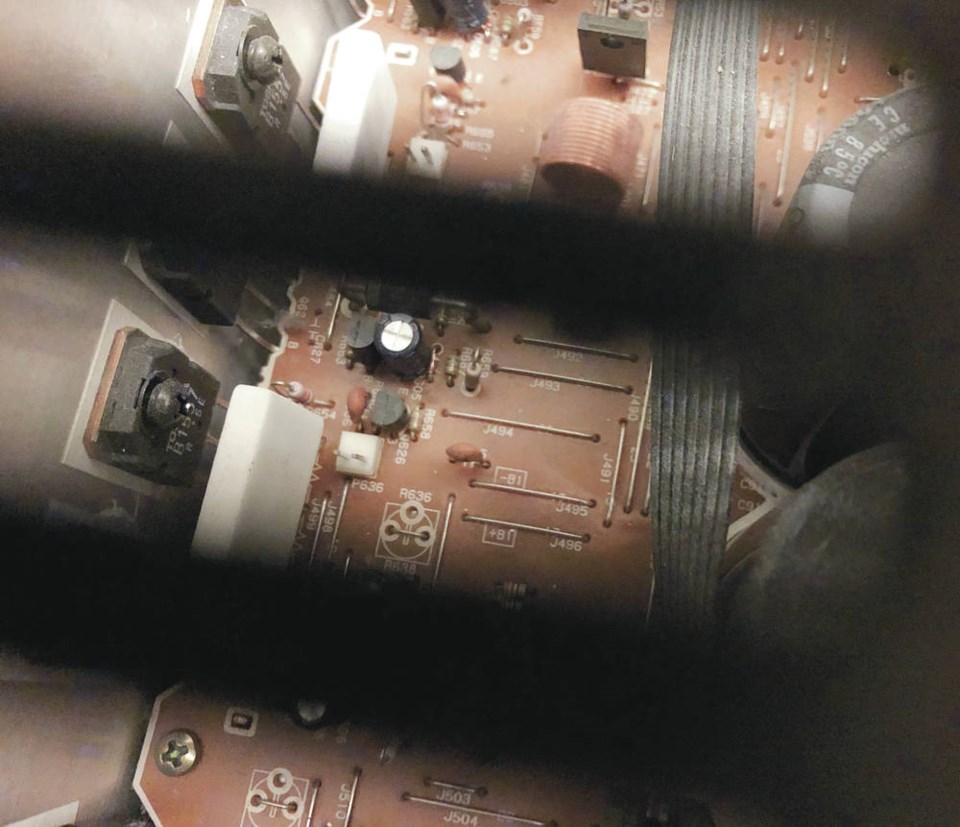Admittedly, it was before my time when, in 1934, Alan Dower Blumlein cut the first stereo disc at what are now the Abbey Road Studios in London.
Blumlein recorded the London Philharmonic performing Mozart’s Jupiter Symphony under the baton of Sir Thomas Beecham.
I did not hear my first stereo sound until around 1960. It was Hank Marvin and the Shadows playing Apache and the sound blew my adolescent mind.
It was several years later before I could afford my first home-stereo set-up. It was pretty straightforward: a record player, a stereo amp and a couple of speakers.
I plugged the red contacts into the red inputs and the white contacts into the white inputs, sat back and listened to the magic of stereo sound. Easy.
That was then and this is now. I just bought my first new audiovisual receiver/amp in over 30 years.
It is, according to the description on the box it came in, a 7.2 channel 4K Ultra HD AV receiver with 80W per channel, HDMI (6in / 1out with eARC). Supports 3D audio formats Dolby Atmos, Dolby Atmos Height Virtualization Technology, DTS:X and DTS Virtual:X.
Right. Of course. Just what I expected.
Included in the box along with speaker cables were an HDMI cable, a component video cable, a video cable, a coaxial digital cable, an optical cable, an audio cable and a LAN cable.
As one who has always gladly accepted his own limitations, I hired a technician from a local technology business to set it all up and felt a little better when it took him a couple of visits to get it all right.
It is very likely that this kind of experience — and I hope I’m not alone in this as a 70-something who grew up during the fastest era (so far) of technological change — will be outshone by today’s pre-10-year-olds, who are completely comfortable with constantly learning new technological concepts.
Even the six- and seven-year-olds in our family take Bluetooth sound and connectivity for granted as part of everyday activities, FaceTiming with multiple friends simultaneously on their iPhones, or Zooming on their iPads.
Chris Lucas, a Fellow at the University of Edinburgh who has researched all this, says kids’ willingness to try new things comes from a fundamental fearlessness.
Adults, Lucas says, are encumbered with years and years of experience that has taught them that pressing the wrong buttons or making the wrong connections is potentially dangerous.
Recently, Lucas published the results of an experiment he conducted with researchers at the University of California, Berkeley. The team put kids and adults in front of a strange machine and gave them an array of objects that they could place on the machine to try to activate it — make it light up and play music. The participants were instructed to find the logical combination of objects that would activate the machine.
The researchers found that kids were much better at choosing the right objects than the adults, who were unwilling to explore alternatives once they’d found a solution that almost, sort of, worked.
The kids were more likely to throw out a half-baked solution in search of a complete one.
Adults presented with a new and strange thing are more likely to try to interact safely with it in a rational, measured way, based on their past experience, said the researcher.
Kids, on the other hand, have grown up in a constant state of adapting. Aware that technology will continually be out of date, they are more open to change.
And let’s not set aside one of the major conclusions that Lucas, who studied computer science at the Massachusetts Institute of Technology, reached about how adults of my generation and today’s kids learn: “Not being afraid to screw up is a major predictor of learning more quickly.”
We don’t know the implications of this for how the next generations of kids will learn, and how we will need to teach them.
We do know that it will not be the same way that we adults grew up learning, from traditionally structured curricula in traditionally structured classrooms.
Writing in the journal Educational Leadership about working with tech-savvy kids, Sylvia Martinez and Dennis Harper suggested that students, working with technology savvy teachers, will more quickly develop better skills in problem solving and collaboration, as well as awareness of information about media literacy.
Abraham Maslow, an American psychologist best known for creating Maslow’s hierarchy of needs, put it this way: “In any given moment we have two options: to step forward into growth or step back into safety.”
Geoff Johnson is a former superintendent of schools. [email protected]



